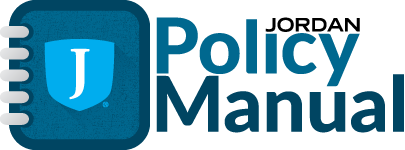- Effective: 9/25/2012
- Revision: 7/30/2019
Continuous monitoring of Superintendent job performance will ensure organizational accomplishment of Board policies on Ends, and organizational operation within the boundaries established in Board policies on Executive Limitations. The purpose of the monitoring is not to criticize or find fault with the Superintendent, but rather to facilitate the success of the Superintendent in accomplishing the Board’s goals. A Board’s highest responsibility is to complete the evaluation and is the key role as a Board member.
Accordingly, monitoring will be accomplished as follows:
- After the conclusion of the school year and prior to the beginning of the following school year, the Superintendent will present to the Board a self-evaluation. This is an informal self-evaluation.
- In November/December, the Superintendent will present Executive Limitations and Ends policy interpretations and data showing compliance to each Ends policy.
- Each Board member will complete the Superintendent Monitoring Tool (see Appendix Superintendent’s Performance Monitoring Tool). This formative written evaluation document will include areas of strength/commendation as well as areas targeted for improvement/growth.
- The Board will meet in closed session to discuss each Board member’s evaluation of the Superintendent. The summative evaluation will be based upon data collected during the previous school year from monitoring Board policies on Ends and Executive Limitations.
- The President of the Board will prepare an evaluation summary and present it to the Board for approval.
- The Board President will present the approved evaluation summary to the Superintendent.
- The Superintendent will be given an opportunity to respond to the Board’s evaluation summary.
- The Board will publish a summary of the Superintendent’s compliance to the public. The formal summative evaluation will be included on the Board’s business meeting agenda as part of the open meeting.
- The Superintendent and the Board President will sign and date the completed formal summative evaluation following the meeting. (See Appendix Superintendent’s Performance Monitoring Tool)
- Any changes to Ends and Executive limitations by which the Superintendent’s performance will be judged for the upcoming year must have been completed by April in accordance with policy GP108, section B.
- In an effort to resolve concerns and safeguard the reputation of the Superintendent and the Board, should any difference of opinion arise between the Superintendent and a member of the Board, the following steps will be applied before either of those parties make his or her difference of opinion a matter of public discussion.
- The Superintendent and Board member agree to meet privately and commit to keeping efforts positive and constructive.
- The Superintendent and Board member will provide sufficient time adequate to remedy any concern that is presented in the initial meeting.
- If either party does not feel that the concern has been addressed sufficiently the concern shall be brought to the attention of the Board of Education in closed session or study session, as allowed by the Utah Open and Public Meeting Act.
- If discussion with the entire Board of Education is not deemed to have resolved the issue by either the Superintendent or a majority of the Board present, either party is allowed to request further exploration of the issue through continued discussion of the issue, requesting private recommendations from disinterested third parties, or creation of a committee selected by the Board.
- The Superintendent or any Board member has the right to invoke B/SC 204 section K. in closed session or study session and request that the Board instruct the affected parties to follow the steps as outlined.
Revision history: 4/23/13, 6/10/14, 3/31/15, 2/21/17
